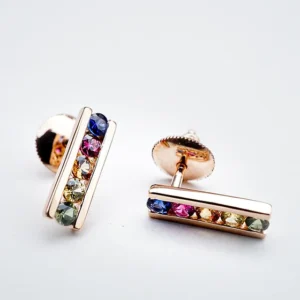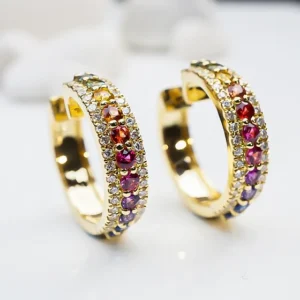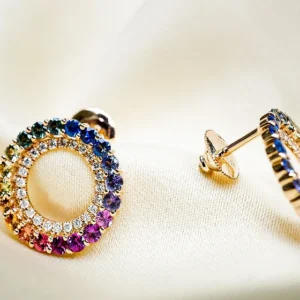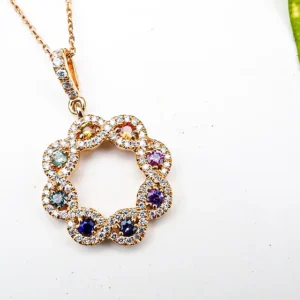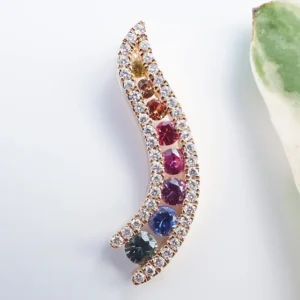Lab Grown Diamonds: A Sparkling Revolution in the World of Gems
In recent years, the diamond industry has witnessed a groundbreaking transformation with the emergence of lab grown diamonds, also known as lab created diamonds, lab diamonds, or man-made diamonds.
Table of Contents
These gems, which possess the same physical, chemical, and optical properties as their mined counterparts, are taking the jewelry market by storm. In this comprehensive guide, we will delve deep into the world of lab grown diamonds, exploring their creation, benefits, environmental impact, and how they compare to traditional mined diamonds.
What Are Lab Grown Diamonds?
Lab Grown vs. Mined Diamonds: Understanding the Difference. Before we dive into the intricacies of lab grown diamonds, it’s essential to grasp the distinctions between these man-made gems and their natural counterparts.
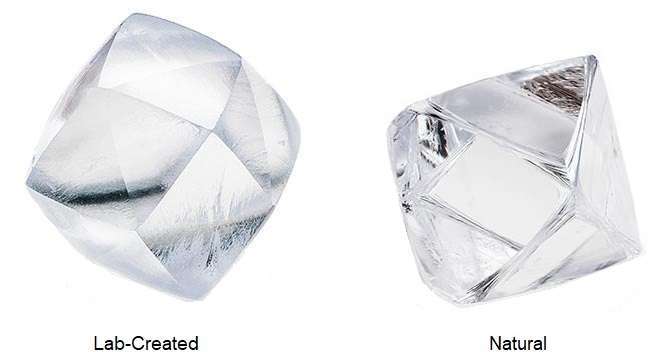
Lab Created and Natural Diamond
Mined Diamonds
Mined diamonds, often referred to simply as “diamonds,” are a natural wonder formed deep within the Earth’s mantle over millions of years. This remarkable process begins when carbon atoms, subjected to immense heat and pressure, crystallize into diamonds, creating the dazzling gemstones we all know and admire.
However, the path from their birthplace to our jewelry boxes is fraught with environmental and ethical challenges. Traditional diamond mining involves extensive excavation and the displacement of large volumes of earth, leading to habitat destruction and soil erosion.
Moreover, the practice has been notorious for fueling conflict in regions where diamonds are abundant, giving rise to the term “blood diamonds” or “conflict diamonds.” The profits from these gems have often funded armed conflicts, human rights abuses, and the exploitation of workers.
As a result, consumers are increasingly turning to lab grown diamonds, recognizing them as a responsible and sustainable alternative that avoids these ethical quandaries while still offering the allure and brilliance of the real thing.
Lab Grown Diamonds
Lab grown diamonds, on the other hand, are a marvel of modern science, meticulously crafted in controlled laboratory environments. Through innovative techniques like high pressure and high temperature (HPHT) and chemical vapor deposition (CVD), scientists have unlocked the secrets of diamond formation.
These methods involve subjecting carbon atoms to conditions that mimic the intense heat and pressure found deep within the Earth’s mantle where natural diamonds form. The result is nothing short of astonishing – diamonds that are indistinguishable from their mined counterparts in terms of their chemical composition, physical properties, and optical brilliance.
Each lab grown diamond is a testament to human ingenuity, offering consumers the opportunity to own a gemstone that embodies the timeless allure and beauty of a natural diamond while sidestepping the environmental and ethical concerns associated with traditional diamond mining.
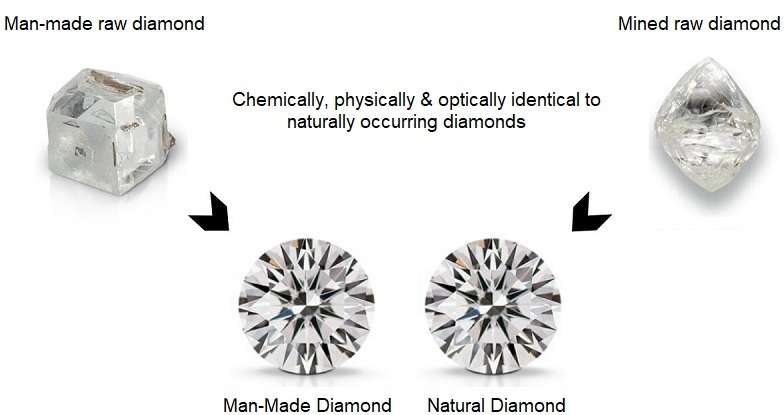
Lab Grown vs. Mined Diamonds
The Advantages of Lab Grown Diamonds
Ethical Considerations
One of the most compelling advantages of lab grown diamonds lies in their ethical sourcing. Unlike mined diamonds, which have long been entangled with issues of conflict and exploitation, lab created diamonds offer a clear and virtuous alternative.
These gems are inherently conflict-free, and by choosing them, consumers can make a meaningful statement against the injustices that have plagued the diamond mining industry. This ethical sourcing ensures that no part of the diamond’s journey involves contributing to human rights abuses or supporting armed conflicts in diamond-rich regions.
By opting for lab grown diamonds, conscientious consumers can wear their jewelry with a clear conscience, knowing they have taken a step towards a more humane and responsible choice in the world of fine gemstones.
Environmental Impact
Lab grown diamonds shine as a beacon of sustainability in the realm of precious gemstones. Their environmental footprint is markedly lower than that of mined diamonds, offering a compelling choice for eco-conscious consumers. The traditional mining of natural diamonds entails substantial land disruption, often leading to habitat destruction, soil erosion, and ecological imbalance.
Furthermore, the water-intensive methods employed in diamond extraction place additional strain on local ecosystems. Additionally, the energy-intensive process of diamond mining and transportation contributes to greenhouse gas emissions.
In stark contrast, lab grown diamonds are cultivated in controlled laboratory environments, requiring minimal land use and significantly reduced energy consumption.
This environmentally responsible approach to diamond production aligns with the principles of sustainability, making lab grown diamonds a choice that not only sparkles with brilliance but also leaves a lighter ecological footprint on our planet.
Cost-Effectiveness
The allure of lab grown diamonds extends beyond their ethical and environmental benefits; their affordability is a compelling factor that resonates with consumers seeking high-quality gemstones without breaking the bank. When compared to their mined counterparts of similar quality, lab grown diamonds consistently present a more cost-effective option.
This inherent value proposition empowers consumers to indulge in larger, more exquisite stones or invest in superior craftsmanship for their engagement rings and other fine jewelry pieces.
It’s a testament to how technological advancements have democratized access to luxury, allowing individuals to celebrate special occasions with the brilliance of diamonds, all while adhering to their budget constraints. In the realm of fine jewelry, lab created diamonds have truly opened up a world of possibilities, making elegance and sophistication more attainable than ever.
Customization
One of the standout features that sets lab grown diamonds apart is the remarkable level of customization they offer. Thanks to the controlled and precise growth process, scientists have unlocked the ability to tailor every aspect of a lab grown diamond to meet customers’ exact preferences.
This level of control extends to the diamond’s size, allowing individuals to choose from a range of carat weights that suit their style and budget. Moreover, the customization extends to the diamond’s shape, offering a diverse array of options beyond traditional cuts, such as emerald, princess, or pear.
Additionally, customers can select their desired color and clarity, ensuring that their lab grown diamond aligns perfectly with their unique tastes and requirements. This level of personalization elevates the experience of selecting a diamond, making it a truly one-of-a-kind gem that embodies the wearer’s distinct vision and style.
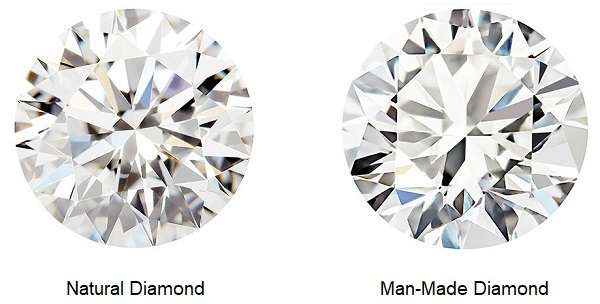
Lab Created and Natural Diamond
The Science Behind Lab Grown Diamonds
High Pressure, High Temperature (HPHT) Method
The High Pressure, High Temperature (HPHT) method stands as a marvel of scientific ingenuity in the world of lab grown diamonds. In this process, a small diamond seed crystal takes center stage, placed within a specialized chamber where it faces extreme conditions of both pressure and temperature, mirroring the natural diamond-forming environment deep within the Earth’s mantle.
Carbon gas is then introduced into this controlled environment, allowing carbon atoms to gradually crystallize on the seed. As they accumulate, they transform into a larger diamond over time. What distinguishes the HPHT method is its exceptional ability to yield diamonds with unparalleled clarity.
The precision of this technique produces diamonds that sparkle with remarkable brilliance, rendering them a top choice for those who seek the utmost in quality and purity when it comes to lab grown diamonds.
Chemical Vapor Deposition (CVD) Method
The Chemical Vapor Deposition (CVD) method represents another extraordinary facet of lab grown diamond production. In this cutting-edge process, a tiny diamond seed is carefully positioned within a chamber that’s saturated with a carbon-rich gas, often methane.
As the gas is heated to the ideal temperature, carbon atoms within the gas start to react, resulting in the deposition of carbon layers onto the diamond seed. Over time, these layers accumulate, gradually building up the diamond into its final form.
This innovative technique not only enables the creation of large diamonds but also ensures that they possess remarkable quality and purity, making CVD-grown diamonds an attractive choice for those who value both size and excellence in their gemstones.
The precision and scalability of the CVD method have opened up exciting possibilities in the world of lab grown diamonds, allowing consumers to embrace the beauty and grandeur of these gems like never before.
Lab Grown Diamonds vs. Mined Diamonds
Quality and Purity
Lab grown diamonds stand as a testament to the remarkable achievements of science and technology, as they are virtually indistinguishable from their mined counterparts in terms of quality and purity. These gems, whether natural or lab grown, share the same essential physical properties.
Their crystal structures, refractive indices, and dispersion characteristics align in perfect harmony to produce the dazzling optical effects that have captivated the world for centuries. Both types of diamonds can exhibit the breathtaking brilliance, fire, and sparkle that make diamonds a symbol of timeless beauty and elegance.
This near-identical quality ensures that consumers who choose lab grown diamonds are not only embracing a sustainable and ethical choice but are also enjoying the same breathtaking beauty and prestige that have made diamonds a cherished treasure throughout history.

Lab Created Diamonds
Certification
Distinguishing between lab grown and mined diamonds relies heavily on the expertise of gemological laboratories, and certification from reputable institutions is paramount. The Gemological Institute of America (GIA), known for its stringent standards and rigorous testing procedures, plays a pivotal role in this process.
GIA provides comprehensive grading reports that meticulously detail the characteristics of each diamond, including its origin. These reports specify whether a diamond is natural or lab grown, providing consumers with the assurance and transparency they need when making an informed purchasing decision.
Such certifications not only offer peace of mind but also ensure that the value and authenticity of each diamond are accurately represented, making them a trusted resource for both buyers and sellers in the diamond industry.
Pricing
As previously highlighted, the cost-effectiveness of lab grown diamonds is a significant draw for consumers. These gems are typically more budget-friendly than their naturally mined counterparts, allowing individuals to acquire exquisite pieces of jewelry without stretching their finances.
What makes lab grown diamonds even more appealing is the potential for their value to appreciate over time. As awareness of environmental and ethical concerns related to traditional diamond mining continues to grow, so does the demand for sustainable and responsible alternatives.
Lab created diamonds, with their ethical and eco-friendly attributes, are poised to benefit from this shifting consumer mindset. This shift in preference towards sustainable gems not only reinforces the appeal of lab grown diamonds but also suggests that they could become not just a responsible choice but also a valuable investment in the long run.
Lab Grown Diamonds in the Jewelry Industry
Engagement Rings
Lab grown diamonds have surged in popularity as the preferred choice for engagement rings. In an era marked by a heightened consciousness of ethical and environmental considerations, couples are turning to these sparkling gems as the perfect embodiment of their love story.
The allure of lab grown diamonds goes beyond their captivating beauty; they symbolize a commitment to a future built on sustainability and responsible choices. By selecting lab created diamonds, couples are not only making a statement about their love but also their shared values.
These gems encapsulate a harmonious blend of elegance and ethics, making them a fitting choice for couples who envision a bright and sustainable future together. As the demand for socially responsible and eco-conscious engagement rings continues to rise, lab grown diamonds are poised to remain a cherished symbol of love and a testament to ethical commitment.
Fashion Jewelry
Beyond their widespread use in engagement rings, lab created diamonds are experiencing a surge in popularity within the fashion jewelry industry. Designers and consumers alike are increasingly captivated by the versatility and eco-friendliness of these gems.
The ability to customize lab grown diamonds to exact specifications allows designers to push the boundaries of creativity, crafting intricate and unique pieces that cater to individual tastes. Consumers, on the other hand, are drawn to the fashion-forward appeal of lab grown diamonds, knowing that they can express their style without compromising their values.
This growing affinity for sustainable and ethical fashion choices has made lab created diamonds a go-to option for those seeking jewelry that makes a statement not just in terms of aesthetics but also in terms of responsible sourcing and environmental consciousness.
As the fashion industry continues to evolve towards greater sustainability, lab grown diamonds are poised to remain at the forefront of this exciting shift.
The Future of Lab Grown Diamonds
As technology continues to advance and consumer preferences evolve toward sustainability and ethical considerations, the future of lab grown diamonds gleams with promise. The trajectory for these gems is undeniably bright, with exciting developments on the horizon.
Anticipate further innovations in diamond cultivation methods, leading to even more efficient and eco-friendly processes. These advancements are likely to yield diamonds of increasingly exceptional quality, sparking greater interest and demand in the market.
As consumers become more conscious of the environmental and ethical aspects of their purchases, lab grown diamonds are poised to gain wider acceptance. They offer an attractive blend of luxurious beauty and responsible sourcing, making them a go-to choice for those seeking to make a positive impact with their jewelry choices.
With the ongoing momentum toward sustainability and ethical consumption, the popularity of lab grown diamonds is destined to continue its upward trajectory, reshaping the jewelry industry for years to come.
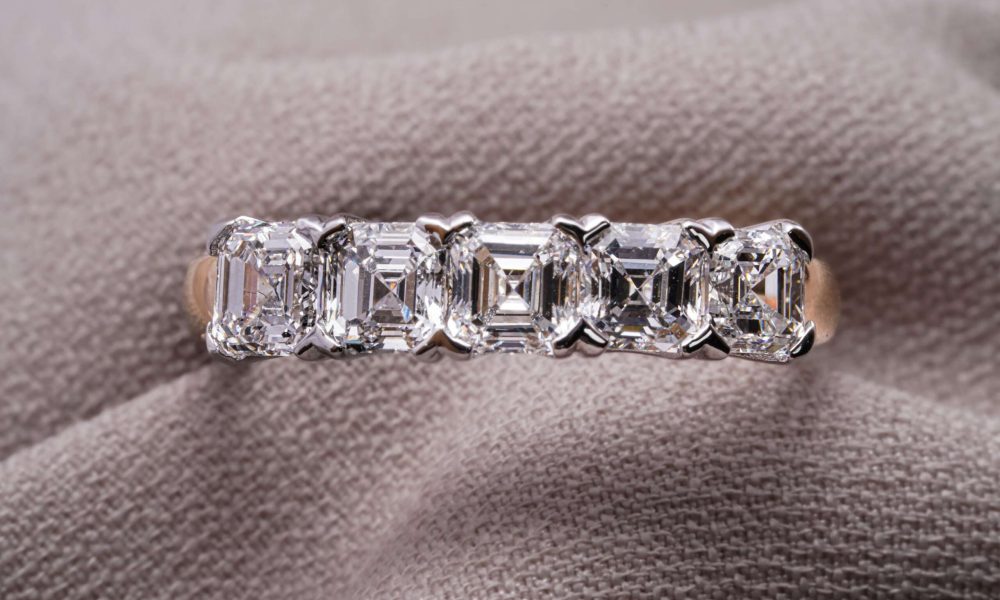
Natural Diamond Ring
Final Thoughts
Lab grown diamonds, also known as lab created diamonds, lab diamonds, or man-made diamonds, represent a revolutionary shift in the diamond industry. These ethically sourced and environmentally friendly gems offer consumers a guilt-free and cost-effective alternative to traditional mined diamonds.
With the ability to customize their characteristics and a rapidly growing presence in the jewelry market, lab grown diamonds are poised to become the gemstone of the future, catering to the desires of both socially-conscious and budget-conscious buyers.
In a world where sustainability and ethics are at the forefront of consumer decisions, lab grown diamonds are shining bright as a beacon of change in the jewelry industry. Whether you’re in search of the perfect engagement ring or a stunning piece of fashion jewelry, lab grown diamonds provide a dazzling and responsible choice that’s here to stay.
FAQs About Lab Grown Diamonds
Lab grown diamonds, also known as lab created diamonds or man-made diamonds, are real diamonds created in a controlled laboratory environment, mirroring the natural diamond-growing process.
Lab grown diamonds are created in labs, while mined diamonds are formed naturally in the Earth's mantle. Both have the same physical and optical properties, but their origin and sourcing differ.
Yes, lab grown diamonds are generally more affordable than mined diamonds of similar quality, making them an attractive option for budget-conscious buyers.
Yes, lab grown diamonds are considered ethical and conflict-free, as they do not involve the environmental and ethical concerns associated with traditional diamond mining.
Yes, reputable gemological laboratories, such as the Gemological Institute of America (GIA), provide grading reports for lab grown diamonds, certifying their quality and origin.
Absolutely. Lab grown diamonds can be customized in terms of size, shape, color, and clarity, providing buyers with a wide range of options to suit their preferences.
Yes, lab grown diamonds are virtually indistinguishable from mined diamonds in terms of appearance. They exhibit the same brilliance, fire, and sparkle.
Lab grown diamonds can appreciate in value over time, especially as awareness of sustainable and ethical gems grows, making them a potential investment.
Lab grown diamonds have a significantly lower environmental footprint compared to mined diamonds, as they require less land, energy, and water for their production.
Yes, lab grown diamonds have gained popularity for engagement rings due to their ethical sourcing, affordability, and the ability to customize them to create unique, meaningful pieces of jewelry.

